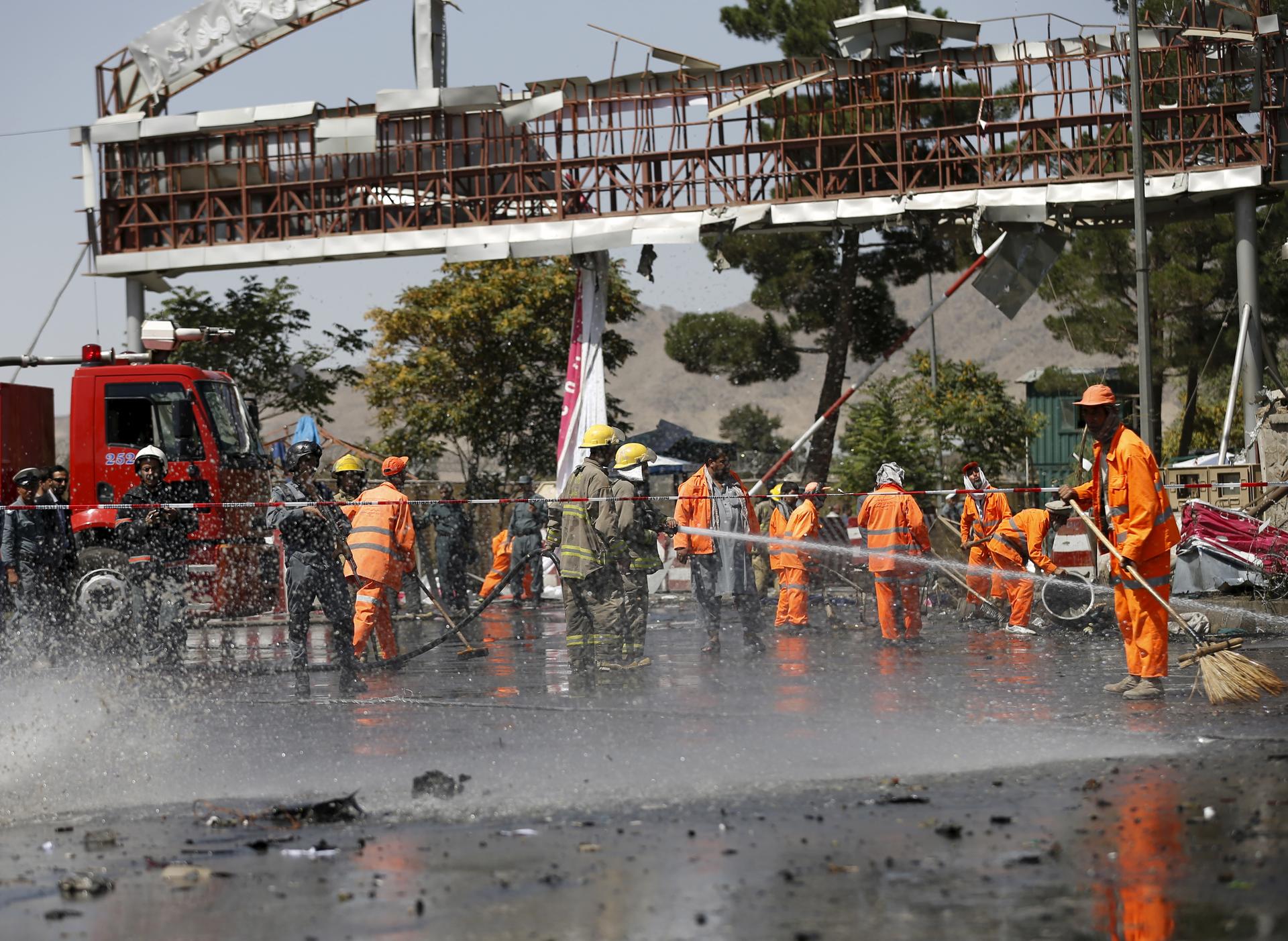Afghan workers clear debris from the site of a car bomb blast at the entrance gate to the Kabul airport.
A wave of violence has engulfed the Afghan capital over the past few days, killing at least 50 people, mostly civilians.
“On Saturday alone, within 24 hours, we had three attacks,” says Mujib Mashal, a reporter for the New York Times in Kabul. “One targeted a residential area, in the middle of the night. It was 1:30 in the morning when a truck bomb went off. It killed a lot of people around the bomb, but also wounded many people sleeping in their homes.”
There were other attacks on the police academy and a military base. On Monday there was a car bomb attack on people lining up to get into Kabul international airport.
Acording to the United Nations, 2015 is on track to be the bloodiest year of the war for Afghan civilians — worse than 2014, when 3,000 civilians were killed. Some 5,000 members of the Afghan military were killed in 2014, more than the the number of US military personnel killed in 13 years of operations.
The attacks this week follow a relative lull in violence, that many associate with a leadership crisis within the Taliban.
The death of the longtime leader of the Taliban, Mullah Mohammed Omar, was announced last month. He had been dead for a couple of years, but since no one had heard from the reclusive chief in years, the news came as a shock to many Taliban commanders. “There had always been rifts within the Taliban over issues,” says Mashal, “but they had this unifying myth in Mullah Omar.”
The succession of a relative moderate, Mullah Akhtar Mansour, is disputed by some Taliban elements, including Mullah Omar’s family. Mashal says many believe Mansour is now trying to prove his toughness to his own commanders.
Mashal says the attacks are having a significant impact on morale in Kabul. “To be honest, the mood in the city is very, very grim. Just because of the repetitive nature of the bombings, (and) the unpredictable scare it casts across the city. Anything could blow up, any minute, anywhere, and that’s scary for an average citizen.”
